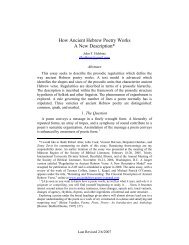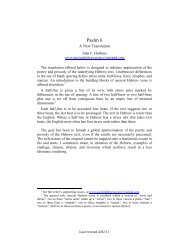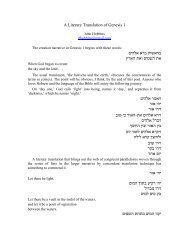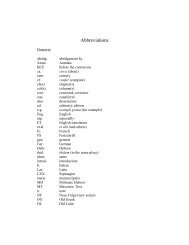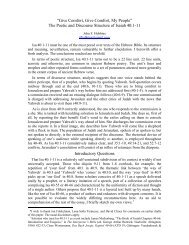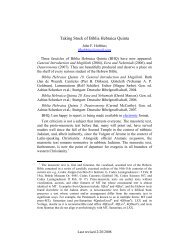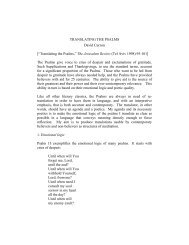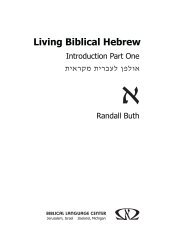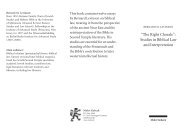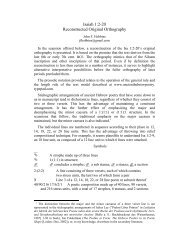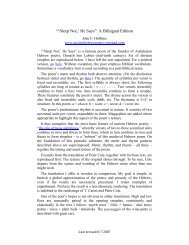Here - Ancient Hebrew Poetry - Typepad
Here - Ancient Hebrew Poetry - Typepad
Here - Ancient Hebrew Poetry - Typepad
- No tags were found...
Create successful ePaper yourself
Turn your PDF publications into a flip-book with our unique Google optimized e-Paper software.
32SummaryThis essay began with a question about continuously operating principlesof organization in ancient <strong>Hebrew</strong> verse. A provisional answer was given,which may be summarized as follows.<strong>Ancient</strong> <strong>Hebrew</strong> verse is characterized by a series of continuouslyrepeated forms. The forms are prosodic units. The central form is termed aline. It consists of two to three parts. A part is termed a verset. A versetconsists of two to three prosodic words. A set of lines, two to three, is termeda strophe. A verset ends in a pause, however minor. A line ends in a strongerpause or a full stop. A strophe usually ends in a full stop.Prosodic, semantic, syntactic, morphological, and sonic parallelisms recuracross versets, lines, and strophes. Prosodic parallelisms alone areobligatory: a verset of two to three prosodic words is unfailingly followed byanother verset of two to three prosodic words, until a poem’s conclusion.A prosodic hierarchy of twos and threes structures a poem. Two to threestress units form a verset, two to three versets a line, two to three lines astrophe, two to three strophes a stanza, and two to three stanzas a poem orsection thereof. A poem, if it contains more than 10 lines, typically consistsof 12, 18, 22, 28, or 36 lines, or combinations thereof. Among the Psalms, 14lines is also a common length.Three varieties of ancient <strong>Hebrew</strong> verse are identifiable, the common, theqinah, and the mashal. They are distinguishable from each other by thevarying patterns of verset and line length they instantiate.



